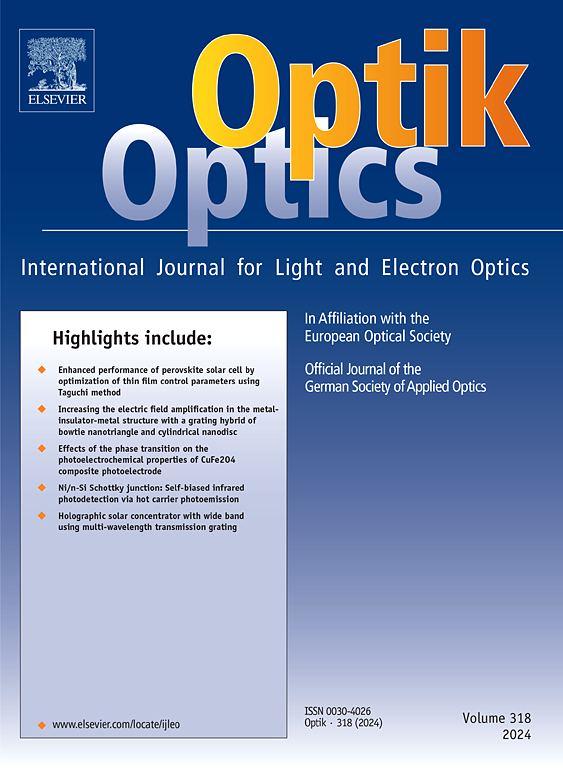Ultra-high-efficiency circularly polarized reflector based on the dislocated double rectangle arrays
IF 3.1
3区 物理与天体物理
Q2 Engineering
引用次数: 0
Abstract
The chiral lasers that can directly generate the circularly polarized light have important applications in a variety of fields, such as optical communications, biomedicine, materials processing, and optical measurements, and they are rapidly becoming an offshoot of the new generation of smart optoelectronic devices. However, the performance of current circularly polarized lasers is still limited by the effective design of chiral nanostructures, and their circular dichroism (CD) generally does not exceed 5%. With the powerful optical modeling capability of the COMSOL Multiphysics platform, we innovatively introduce two dislocated rectangular blocks to break the spatial symmetry of the metasurface and obtain a huge chirality (CD > 95%). This is then combined with a cylindrical array to form a Fabry–Pérot (FP) resonant cavity corresponding to a typical optical ternary system, which pushes the peak reflectivity of the cascaded metasurface to 99.6%. Our designed chiral cascade metasurfaces simultaneously satisfy the demanding requirements of high reflectivity and large circular dichroism, and are expected to replace the conventional multilayer distributed bragg reflectors (DBRs) in VCSELs, contributing to the further development of miniaturized chiral lasers.
求助全文
约1分钟内获得全文
求助全文
来源期刊

Optik
物理-光学
CiteScore
6.90
自引率
12.90%
发文量
1471
审稿时长
46 days
期刊介绍:
Optik publishes articles on all subjects related to light and electron optics and offers a survey on the state of research and technical development within the following fields:
Optics:
-Optics design, geometrical and beam optics, wave optics-
Optical and micro-optical components, diffractive optics, devices and systems-
Photoelectric and optoelectronic devices-
Optical properties of materials, nonlinear optics, wave propagation and transmission in homogeneous and inhomogeneous materials-
Information optics, image formation and processing, holographic techniques, microscopes and spectrometer techniques, and image analysis-
Optical testing and measuring techniques-
Optical communication and computing-
Physiological optics-
As well as other related topics.
 求助内容:
求助内容: 应助结果提醒方式:
应助结果提醒方式:


